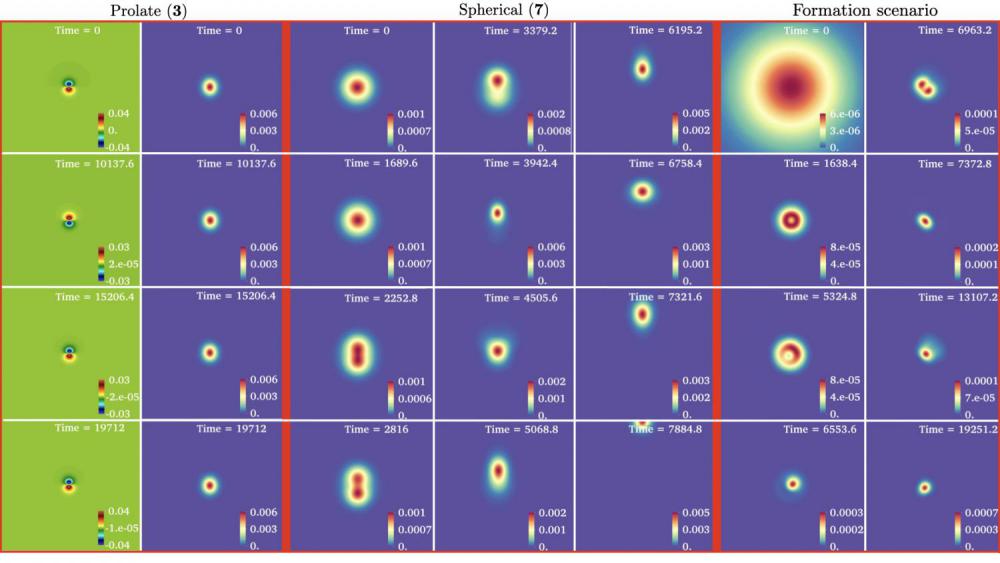Proca stars, first discovered in this paper, are a vector cousin of the well known model of scalar boson stars - see these papers for reviews [1], [2] and comparisons between the two models [3], [4].
It has been thought that for both models the ground state, i.e. both the minimal energy/mass solutions (fixing the frequency, say) and the dynamically most robust configurations, are the spherical stars. However, in the paper "The non-spherical ground state of Proca stars", it was shown that this is not the case for the Proca model. The true ground state are non-spherical stars, which are prolate, and are a sort of Proca dipole.
In the following we show some animations of the dynamical evolutions of different Proca stars reported in the aforementioned paper.
Video 1: Evolution of a Prolate star - solution 3 in the Paper. It remains stable. Here we show the Proca energy density on the x-z plane. Snapshots are shown in Fig. 4 of the paper.
Video 1b: Evolution of a Prolate star - solution 3 in the Paper. It remains stable. Here we show the Proca scalar potential on the x-z plane. Snapshots are shown in Fig. 4 of the paper.
Video 2: Evolution of a spherical star - solution 7 in the Paper. It decays into a kicked, still oscillating prolate star. Here we show the Proca energy density on the x-z plane. Snapshots are shown in Fig. 4 of the paper.
Video 2b: Evolution of a spherical star - solution 7 in the Paper. It decays into a kicked, still oscillating prolate star. Here we show the Proca scalar potential on the x-z plane. Notice the dipolar features of the kicked remnant.
Video 3: Evolution of a spherical star - solution 7 in the Paper imposing a Z_2 north-south symmetry (along the z-axis). The artificial symmetry prevents the decay into a dipole along the z-axis. After some dynamics along the z-axis, the star now gets a 2-centre structure on the orthogonal (x-y) plane. Here we show the Proca energy density on the x-z plane.
Video 3b: Evolution of a spherical star - solution 7 in the Paper imposing a Z_2 north-south symmetry (along the z-axis). Here we show the Proca scalar potential on the x-y plane (NOT x-z), showing a dipolar structure emergion on this plane.
Video 4: Evolution of a quadrupolar star - solution 10 in the Paper. It decays into a prolate star. Here we show the Proca energy density on the x-z plane. The dipolar nature of the remnant is clearer in the next video.
Video 4b: Evolution of a quadrupolar star - solution 10 in the Paper. It decays into a prolate star. Here we show the Proca scalar potential on the x-z plane.
Video 5: Evolution of a quadrupolar star - solution 12 in the Paper. It collapses into a black hole. Here we show the Proca energy density on the x-z plane.
Video 5b: Evolution of a quadrupolar star - solution 12 in the Paper. It collapses into a black hole. Here we show the Proca scalar potential on the x-z plane.
Video 6: Dynamical formation of a prolate star via collapse of a spherical cloud. Here we show the Proca energy density on the x-z plane. Snapshots are shown in Fig. 4 of the paper.
Video 6b: Dynamical formation of a prolate star via collapse of a spherical cloud. Here we show the Proca scalar potential on the x-z plane.
